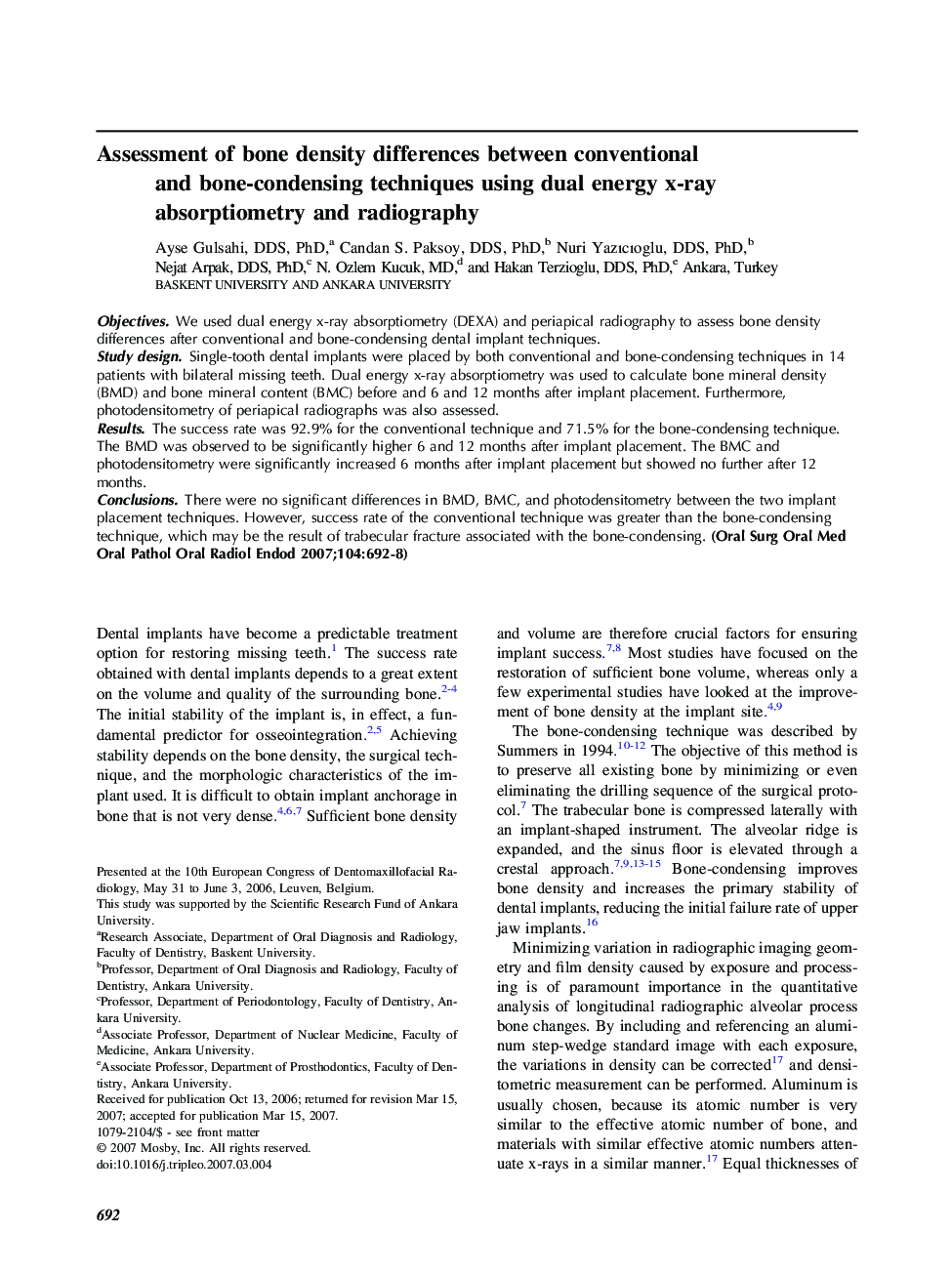| کد مقاله | کد نشریه | سال انتشار | مقاله انگلیسی | نسخه تمام متن |
|---|---|---|---|---|
| 3169220 | 1199461 | 2007 | 7 صفحه PDF | دانلود رایگان |

ObjectivesWe used dual energy x-ray absorptiometry (DEXA) and periapical radiography to assess bone density differences after conventional and bone-condensing dental implant techniques.Study designSingle-tooth dental implants were placed by both conventional and bone-condensing techniques in 14 patients with bilateral missing teeth. Dual energy x-ray absorptiometry was used to calculate bone mineral density (BMD) and bone mineral content (BMC) before and 6 and 12 months after implant placement. Furthermore, photodensitometry of periapical radiographs was also assessed.ResultsThe success rate was 92.9% for the conventional technique and 71.5% for the bone-condensing technique. The BMD was observed to be significantly higher 6 and 12 months after implant placement. The BMC and photodensitometry were significantly increased 6 months after implant placement but showed no further after 12 months.ConclusionsThere were no significant differences in BMD, BMC, and photodensitometry between the two implant placement techniques. However, success rate of the conventional technique was greater than the bone-condensing technique, which may be the result of trabecular fracture associated with the bone-condensing.
Journal: Oral Surgery, Oral Medicine, Oral Pathology, Oral Radiology, and Endodontology - Volume 104, Issue 5, November 2007, Pages 692–698